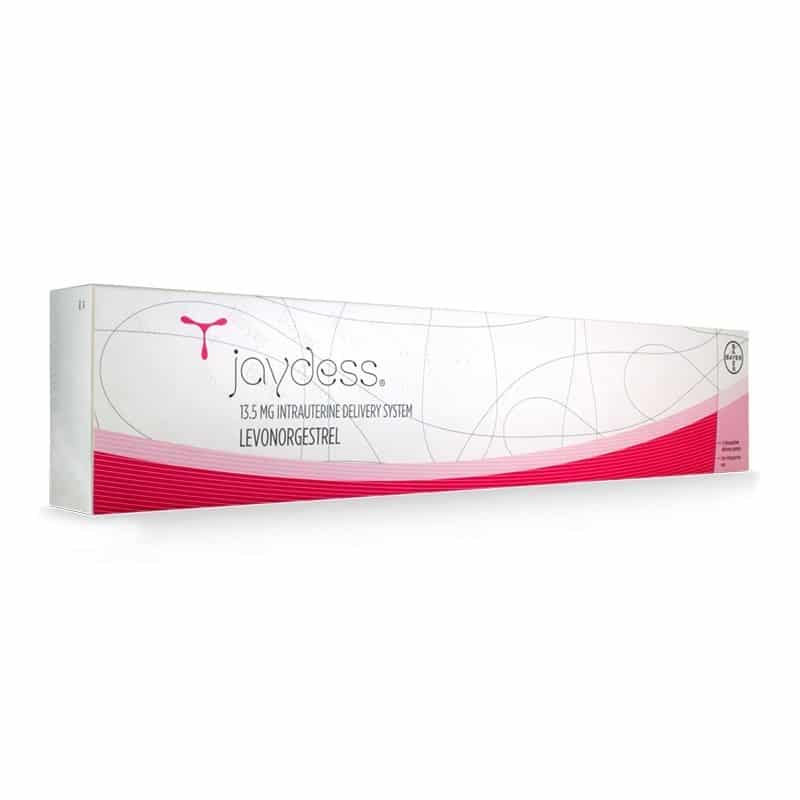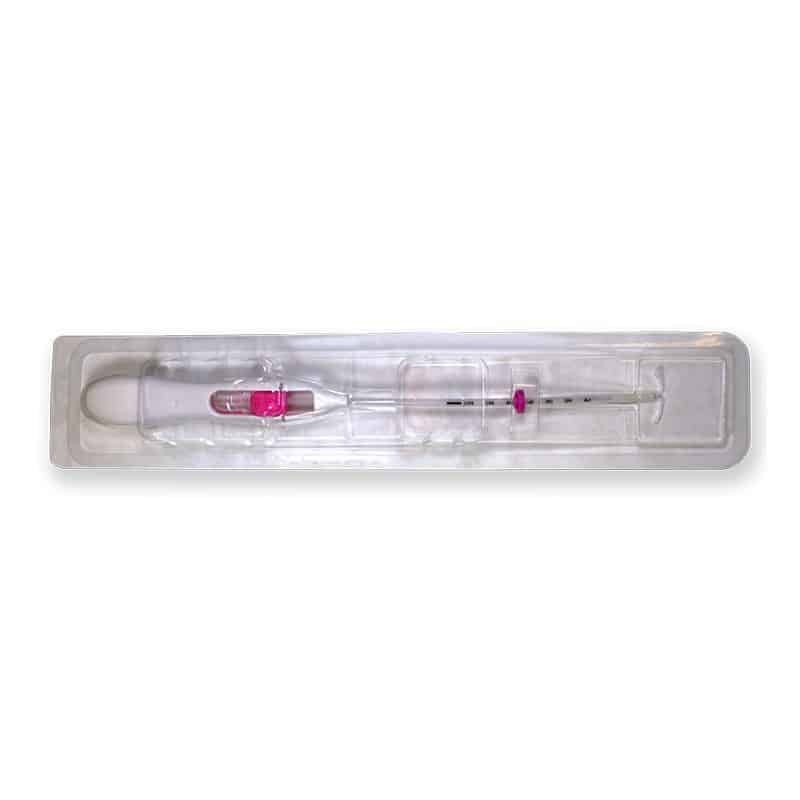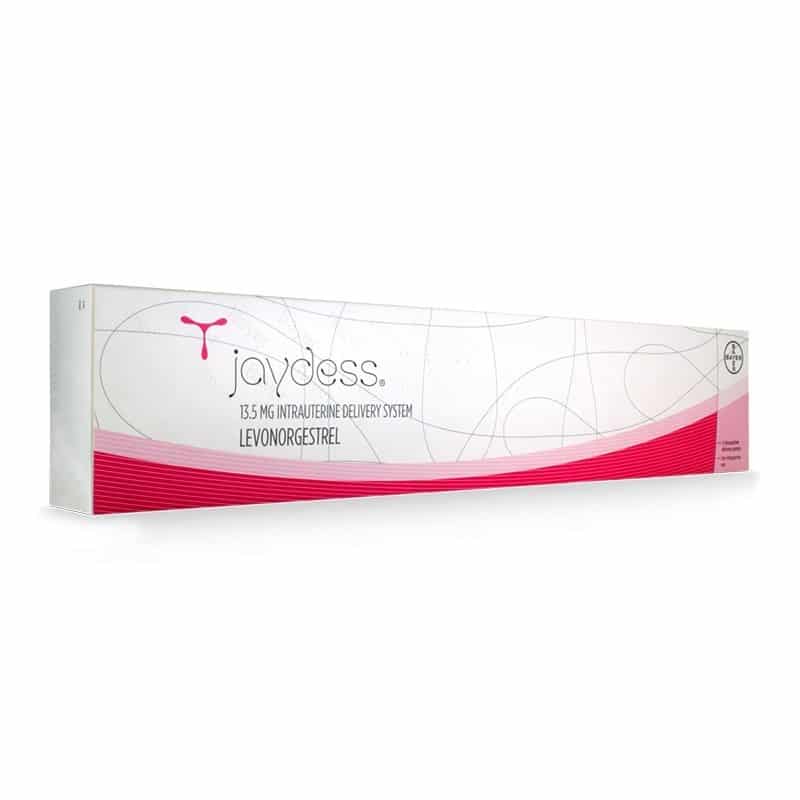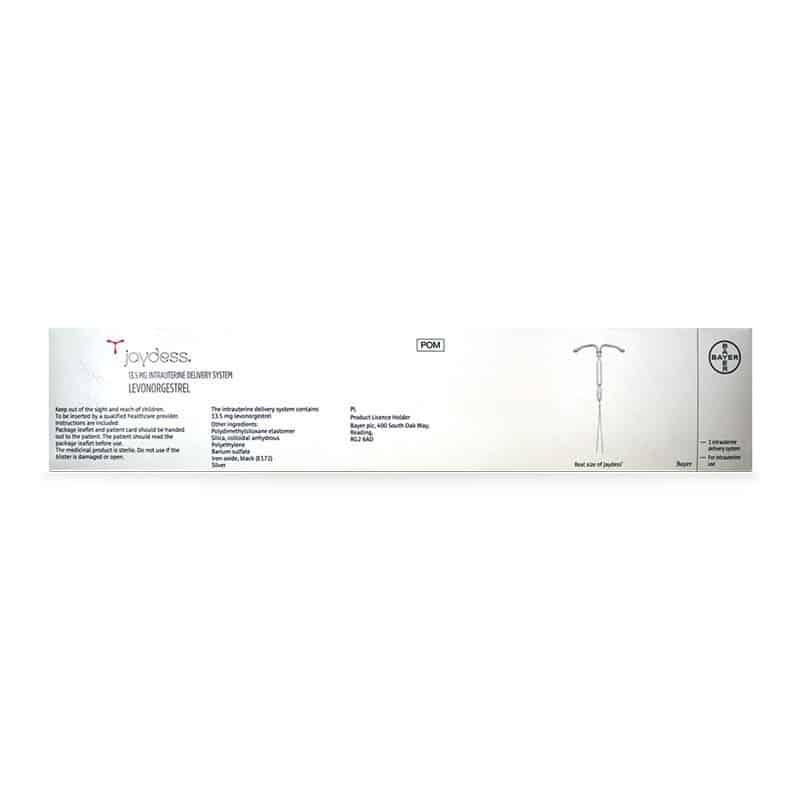JAYDESS® is a small T-shaped intrauterine system (IUS) designed for contraception. It contains 13.5 mg of levonorgestrel, a hormone used in various contraceptive pills. The device is placed inside the uterus (womb) where it slowly releases the hormone over a period of 3 years, preventing pregnancy through several mechanisms. This product provides a long-term, reversible contraception option.
JAYDESS® Indications
JAYDESS® is used for the prevention of pregnancy and is suitable for women who desire a long-term, but reversible, method of contraception. It does not act as an emergency contraceptive and should not be used after unprotected intercourse as a means of immediate contraception.
- Primary Use: Contraceptive for women of reproductive age.
- Duration: Effective for up to 3 years.
JAYDESS® Mechanism of Action
JAYDESS® prevents pregnancy in several ways:
- Thickening of Cervical Mucus: The hormone levonorgestrel makes the mucus in the cervical canal thicker, preventing sperm from entering the womb.
- Preventing Ovulation: In some women, the hormone may inhibit ovulation.
- Thinning of the Uterine Lining: It reduces the thickness of the endometrium, making it unsuitable for a fertilized egg to implant.
- T-Shape Presence in the Uterus: The device’s physical presence in the womb further aids in preventing sperm from moving effectively and reaching the egg.
JAYDESS® Dosage and Administration
JAYDESS® contains 13.5 mg of levonorgestrel, which is released at an initial rate of 14 mcg/day. This release rate decreases over time, reducing to about 5 mcg/day by the end of the third year.
- Insertion: JAYDESS® must be inserted by a trained healthcare professional. The insertion typically occurs within the first 7 days of the menstrual cycle for immediate contraceptive effect.
- Placement: The system is inserted in the uterus, and placement takes just a few minutes. Local anesthesia can be applied to minimize discomfort.
After 3 years, JAYDESS® must be removed and can be replaced by another device immediately if continued contraception is desired. Removal typically involves a minor procedure, during which the threads of the device are gently pulled.
JAYDESS® Side Effects and Precautions
The most common side effects with JAYDESS® occur within the first 3 to 6 months after insertion and may include changes in menstrual bleeding patterns. Over time, most users experience fewer bleeding days and lighter periods, and some women may stop having periods altogether.
- Common Side Effects:
- Irregular bleeding or spotting, particularly in the first few months.
- Headaches and acne.
- Pelvic pain and vaginal infections.
- Ovarian cysts: Often resolve on their own and rarely require surgical intervention.
- Severe but Rare Side Effects:
- Ectopic pregnancy: While rare, it can occur and is a serious medical condition requiring immediate attention.
- Pelvic Inflammatory Disease (PID): More likely if the user has multiple sexual partners or a history of sexually transmitted infections.
- Perforation of the Uterus: This can occur during insertion and may require removal of the device.
Women with specific health conditions should avoid using JAYDESS®:
- Contraindications:
- Current or recurrent pelvic infections.
- Unexplained vaginal bleeding.
- Known or suspected breast cancer.
- Known or suspected pregnancy.
JAYDESS® Drug Interactions
Some medications may affect the efficacy of JAYDESS® by influencing the metabolism of levonorgestrel. Women using JAYDESS® should inform their healthcare provider if they are taking or planning to take any of the following medications:
- Anti-epileptic drugs such as phenytoin or carbamazepine.
- HIV medications like efavirenz or nevirapine.
- Antibiotics such as rifampicin.
- St. John’s Wort, an herbal remedy that may reduce hormone effectiveness.
Healthcare providers should consider alternative or additional contraceptive methods for patients using any of the above medications.
JAYDESS® Clinical Studies and Outcomes
In clinical trials, JAYDESS® demonstrated high efficacy in preventing pregnancy, with a failure rate of less than 1% over the 3-year period. Clinical outcomes also showed a significant reduction in menstrual bleeding in many users.
- Efficacy: 99% effective in preventing pregnancy.
- Common Findings: Most women reported a reduction in menstrual bleeding and pain after the first 6 months of use.
In rare cases where pregnancy occurred while using JAYDESS®, ectopic pregnancy was more likely compared to women who were not using contraception. However, the overall risk remains lower than in women using no contraception at all.
JAYDESS® Warnings and Precautions
There are some conditions under which JAYDESS® should be used with caution. Women with congenital heart disease, valvular heart disease, or those who are at increased risk of infections should discuss with their healthcare provider whether JAYDESS® is appropriate for them.
- Pelvic Infections: Users should be mindful of the risk of pelvic inflammatory disease, particularly in the first few weeks after insertion. Maintaining good sexual health and using barrier methods of contraception (like condoms) with new or non-monogamous partners can help reduce the risk.
- Breastfeeding: Small amounts of levonorgestrel can be absorbed by breastfeeding infants. However, studies have shown no harmful effects on breastfed infants.
JAYDESS® Storage and Handling
JAYDESS® should be stored in a cool, dry place, with a temperature not exceeding 30°C. The system should remain in its original sterile packaging until it is ready for insertion by a healthcare professional. Once inserted, it is recommended to schedule regular check-ups every 4 to 12 weeks and annually after that.




